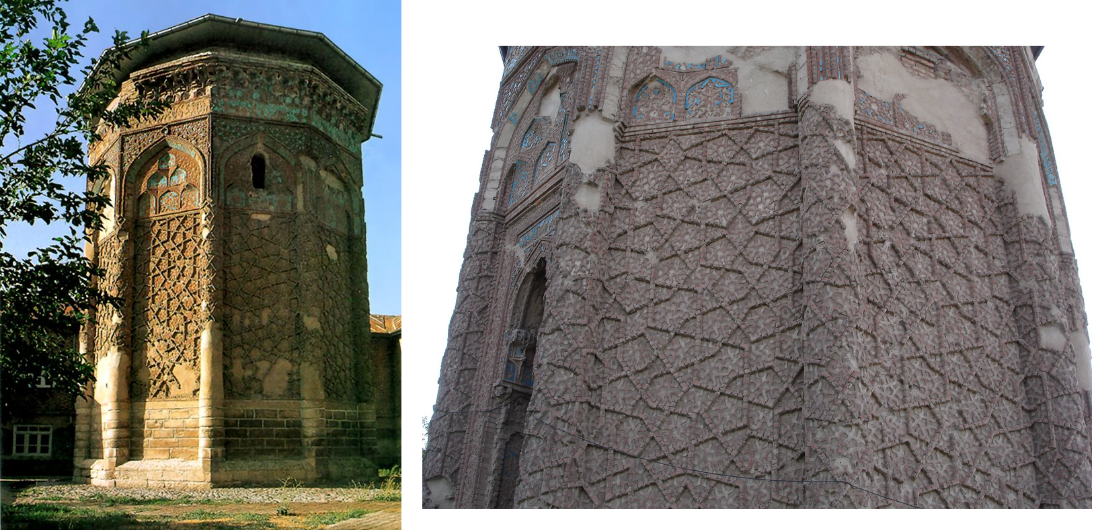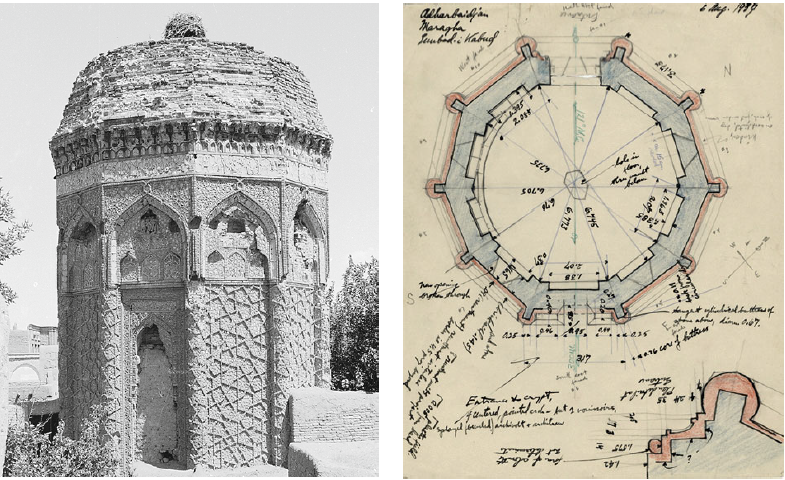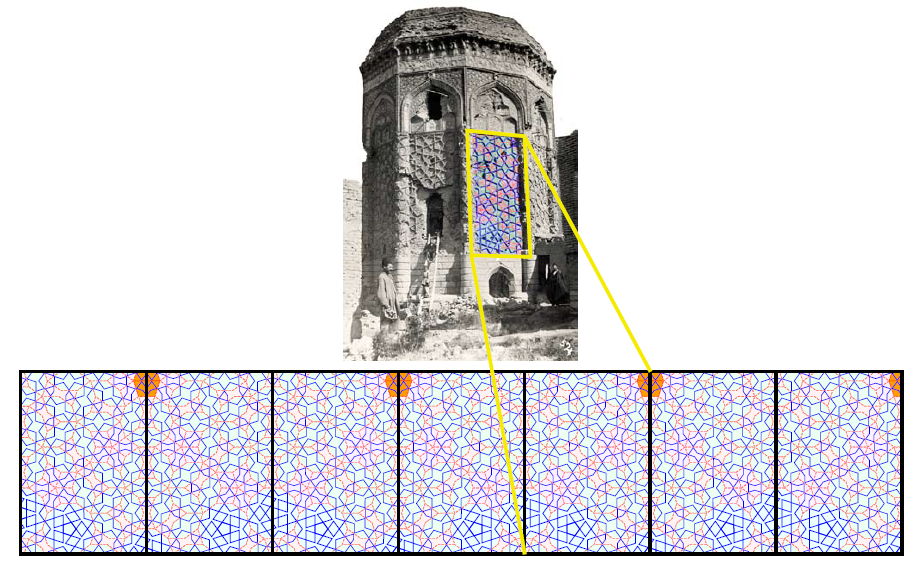Maragha - Iran
A wonderful example of the use of girih tegels is the decoration of the Gunbad-i-Kabud mausoleum in Maragha (Iran 1197 AD).
The wall pannels are filled in with a pattern of decagons, hexagons, bowties and rhombusses. Remarkable is that the girih patters isn't shown, but just the decorative lines, laid upon the pannels.
Click on the checkbox to show the underlying polygonal pattern.

Below you can see the girih pattern of 7 pannels of the building. The pannels are mirrored about an edge of the building, so the pattern is running round the whole building. Just on the top there's a little correction where a rhombus is cut to match.
Note: in Who's counting? Carol Bier remarks that the building isn't octagonal at all as Lu and Steinhardt write, followed by many others.
"The misconception that Gonbad-e Qabud is an octagonal building (normative for the period) is widespread, reiterating the mistakes of earlier publications. Although Makovicky mentions visiting the site in 2002 he must not have stopped to count the sides! And Lu, who so carefully relied upon historical photographs for testing his reconstructions of the patterns, did not stop to think that the four sides as represented in these historical photographs could not signify an octagonal tower."

